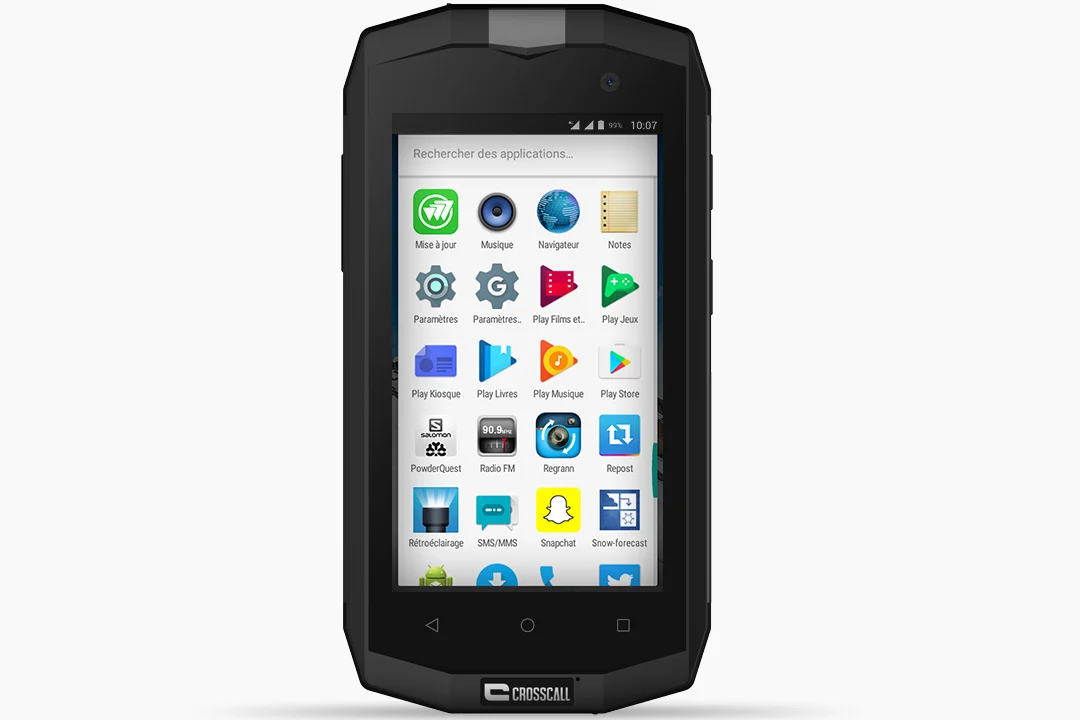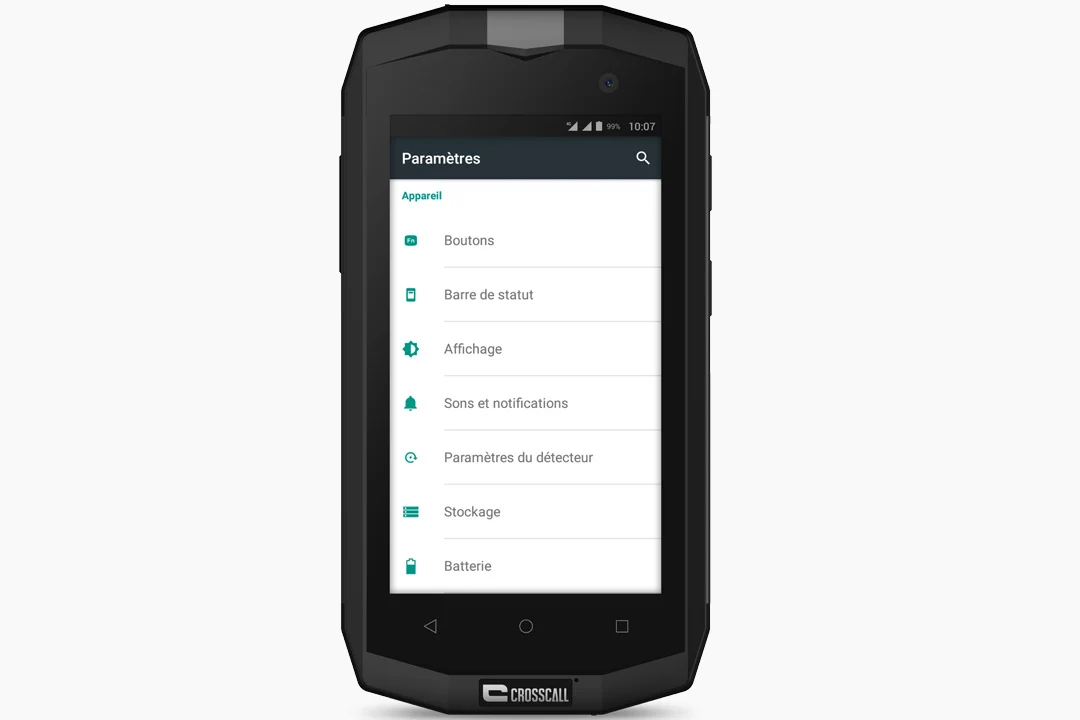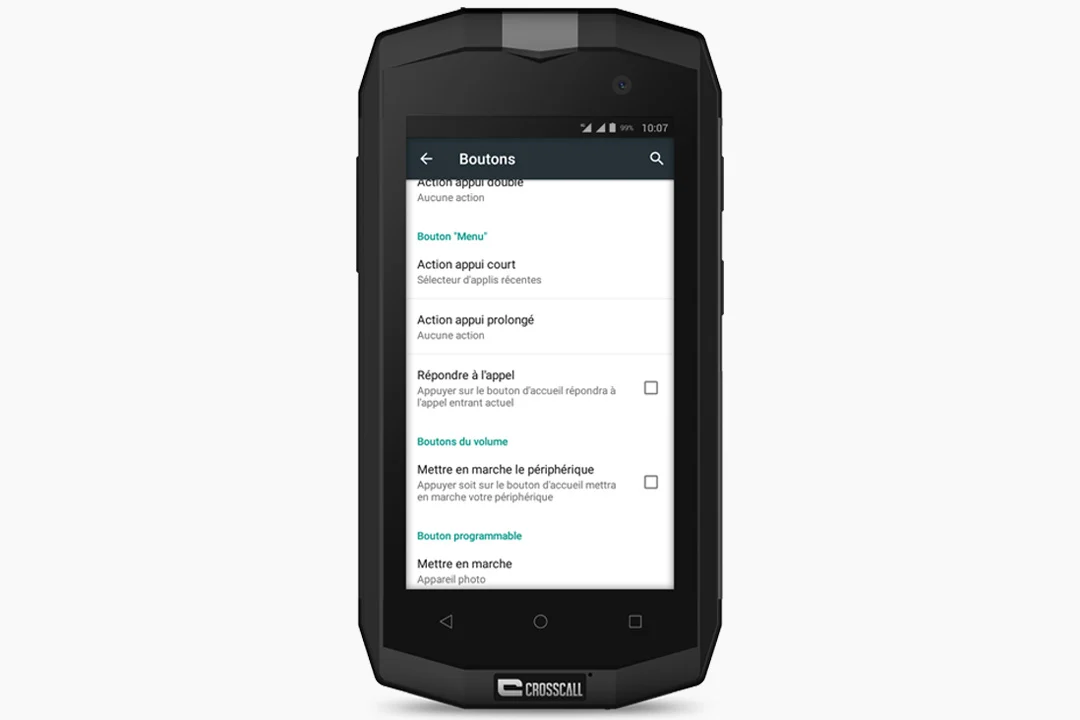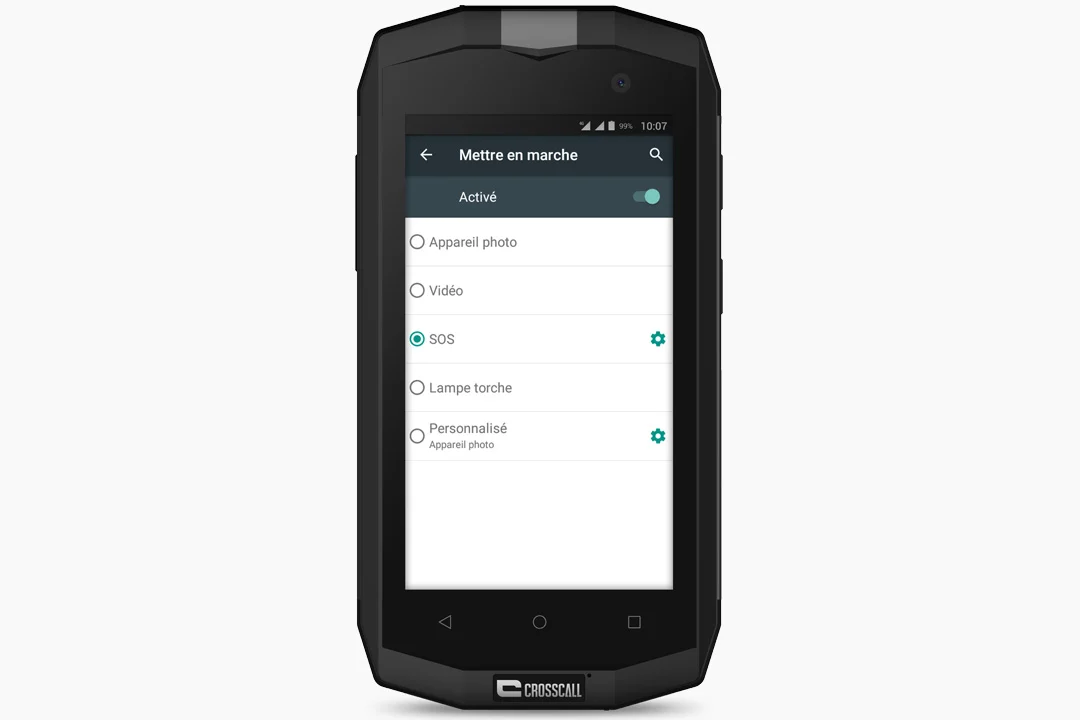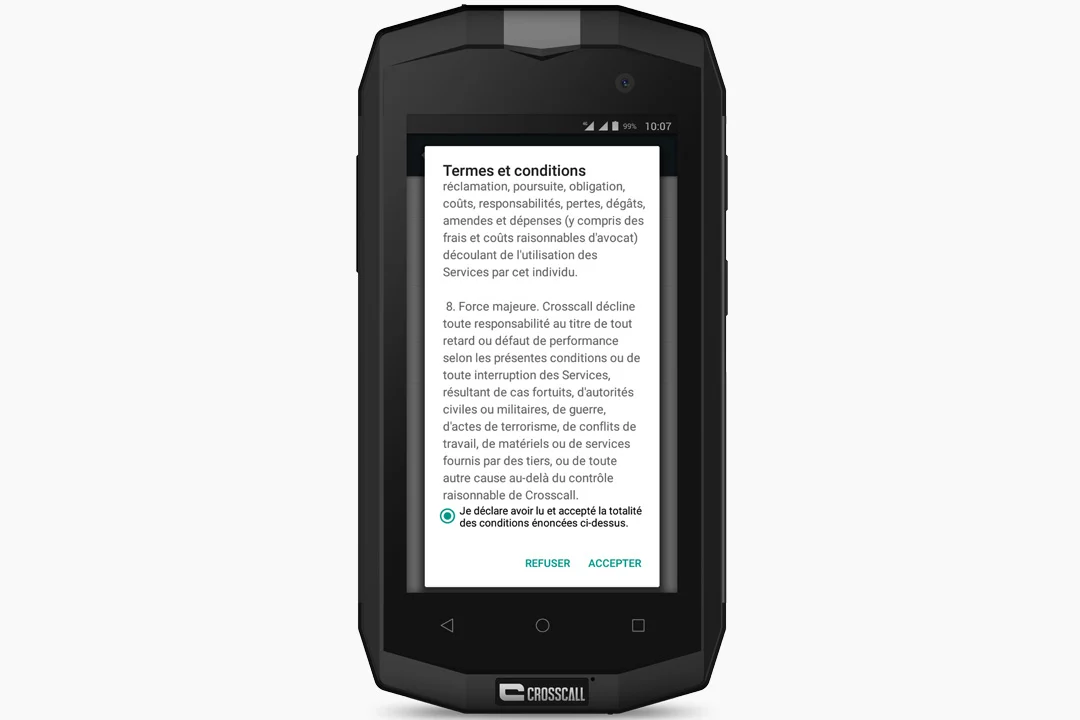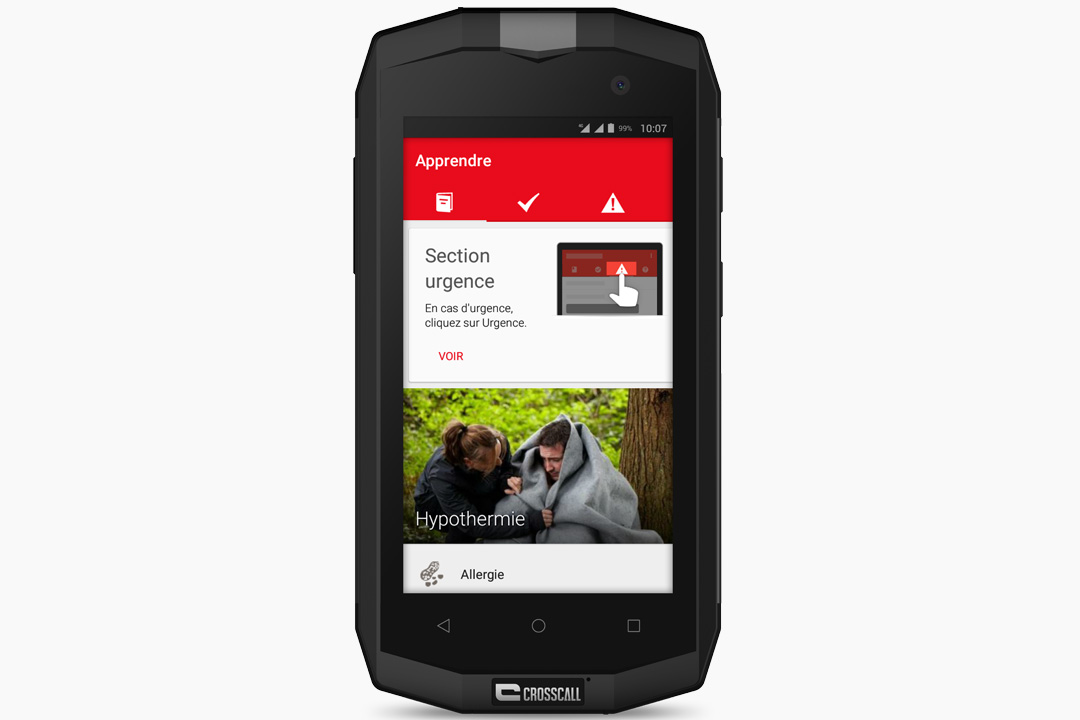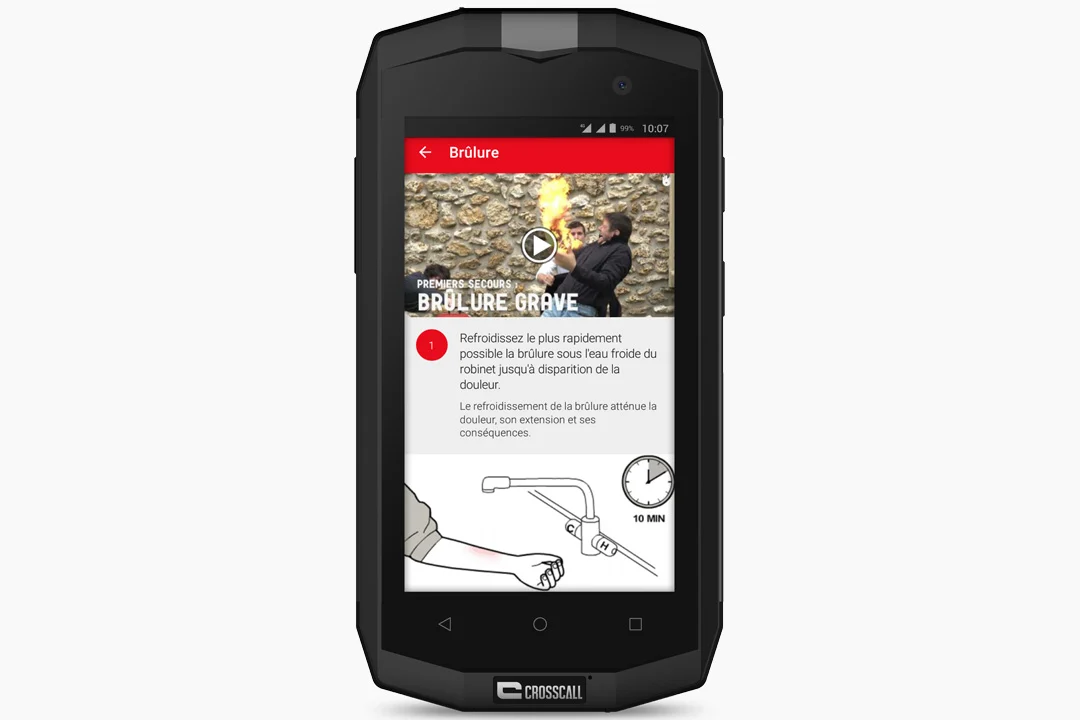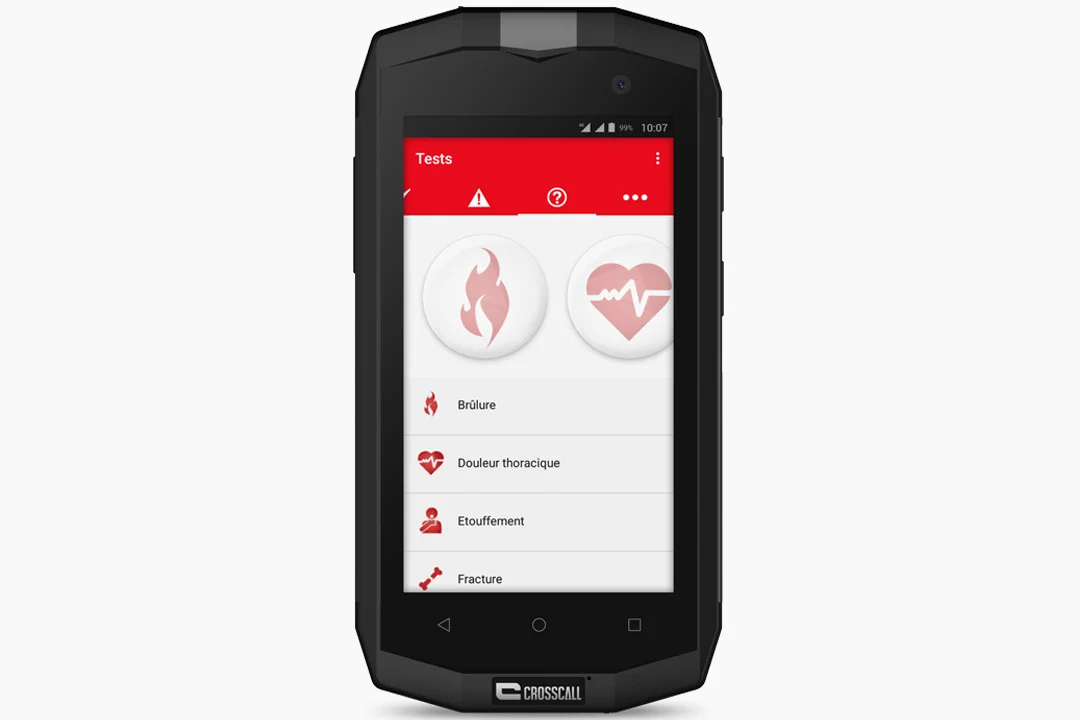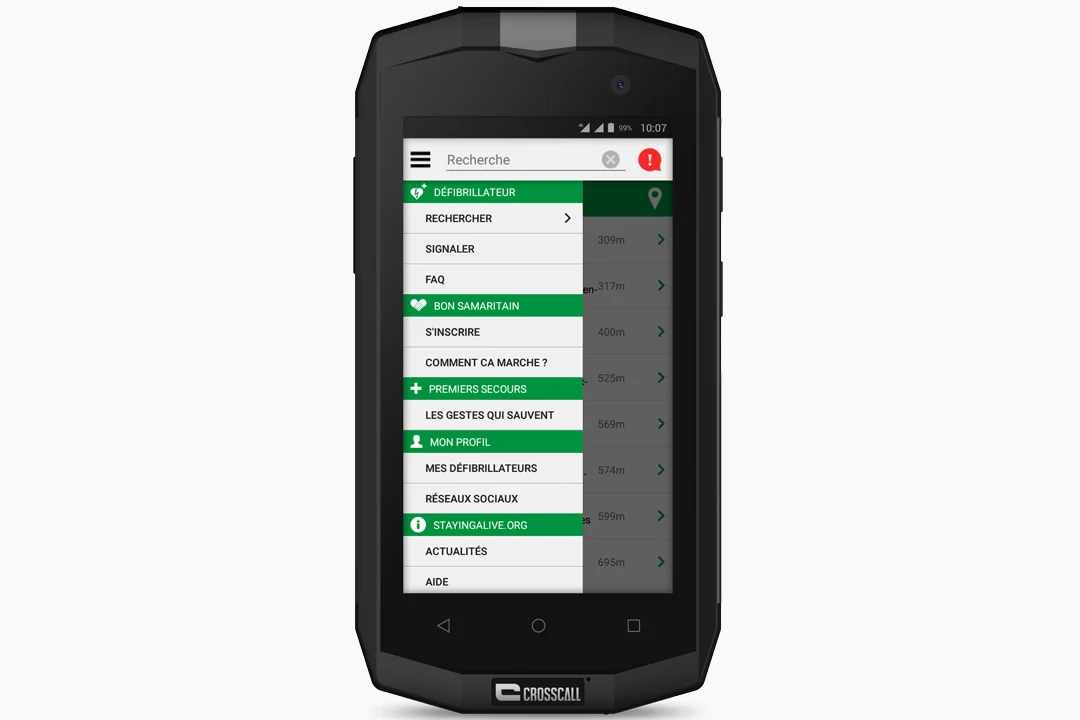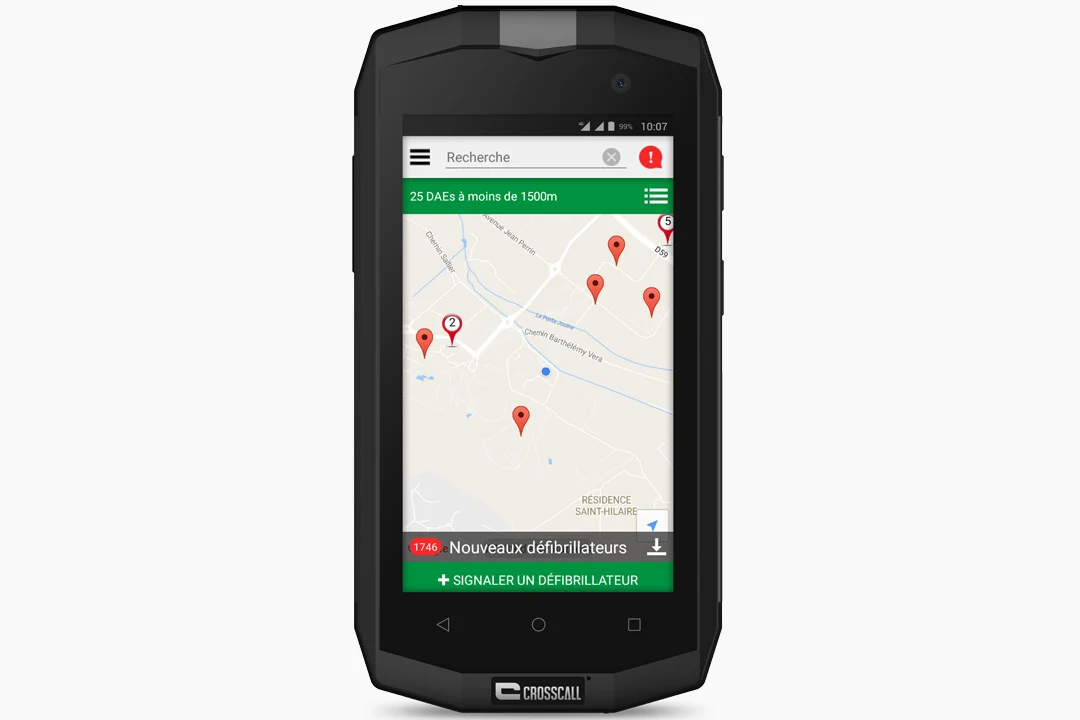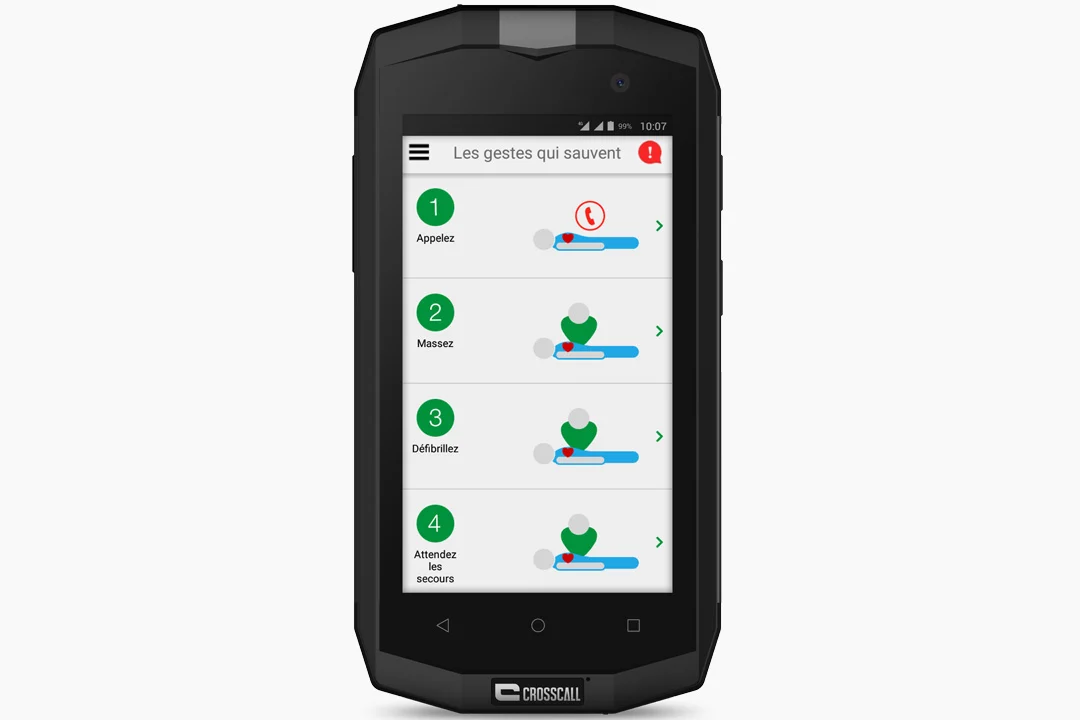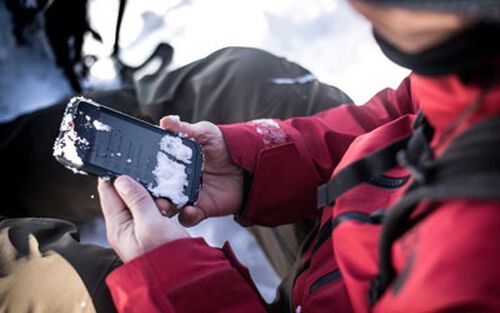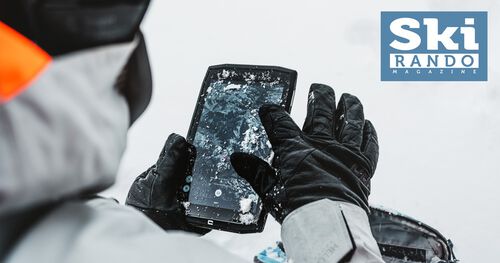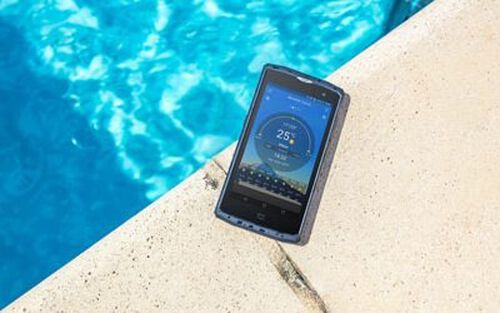CROSSCALL has chosen to equip its TREKKER-M1, TREKKER-M1 Core and TREKKER-X3 smartphones with a customizable button, providing access to an SOS* function.
It allows you to :
Send a predefined emergency message or GPS coordinates to one or more pre-selected contacts. Entering your GPS position will be a real time-saver for emergency services.
Make an emergency call to one or more pre-selected contacts.
Flash the light on the back of the device to be spotted quickly.
Put the phone on speakerphone if you are unable to hold your smartphone for long periods, for example.
Be located via networks and record the emergency call.
Follow the guide!
*The SOS function should never be considered as an equivalent alternative to emergency calls to the authorities.
All explanations were made with the TREKKER-M1.
SOS FUNCTION
- Go to " Settings " on your CROSSCALL.
- Click on " Buttons ", then in the " Programmable buttons " section, select " SOS " by pressing the gear icon.
- Accept the " Terms and Conditions ".
- You then have several options for managing your emergency call: " Emergency SMS recipient(s) " or " Emergency call recipient(s) ".
- In both cases: click on the 3 dots at the top right of the screen. Select " Add an item ". You will then be asked to enter the recipient's number and the content of the SMS. In the " Add a contact " option you can choose any person(s) you wish to contact in an emergency.
- In " Settings ", you can also choose from several options: " Locate via network ", " LED flashing " for quick location, " Loudspeaker " mode and "Record call".
CROSSCALL offers a few additional tips to help you manage your emergency call after protecting the victim(s):
- Call the appropriate emergency services: 112 or 15 (SAMU), 18 (FOMPIERS), 17 (FORCES DE L'ORDRE). If you dial the wrong number, your alert message will be repeated to the appropriate service.**
- The emergency services know absolutely nothing about the situation, so they'll ask you questions to help them understand what's going on. Be as precise as possible. Speak clearly and calmly, preferably in this order:
- Your identification.
- Explain where you are and how to get to the accident site.
- Describe the nature of the accident.
- Specify the number and apparent condition of the victims.
- Describe what you saw, if possible: number of victims, their gender and approximate age, their apparent condition (bleeding, talking, breathing...), their position (standing, sitting, lying on their back...), the actions you performed.
- Specify if there are any persistent risks.
- Don't hang up first. Always wait for the emergency services to give you instructions.
Finally, you can also take first aid training with a number of organizations, the best known being the Red Cross.
**You can also enter the number of the ski area if you're on a winter sports vacation, or the PGHM (Peloton de Gendarmerie de Haute Montagne) in your commune if you're going into the mountains.
SECOURISM 2.0
"l'Appli qui sauve 2.0" (The App that saves 2.0)
This free application from the Red Cross invites you to learn or review first aid techniques, prepare for disasters and test yourself in a fun way.
Download the application here.
The Staying Alive application
Updated regularly, this application lists public places equipped with AEDs: self-service automatic defibrillators. It provides a practical guide to the use of defibrillators and a pictorial reminder of life-saving gestures. An "Emergency" mode helps you to perform the right gestures in the right order. People trained in first aid can choose to be alerted in the event of cardiac arrest nearby.
Download the application here.
 Choisissez votre pays et votre langue
Choisissez votre pays et votre langue
